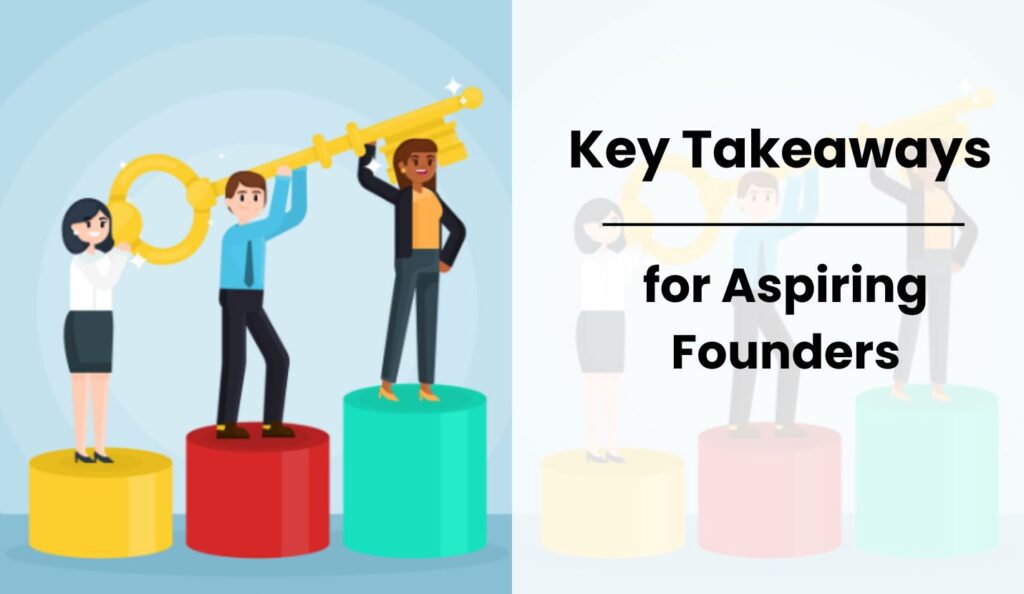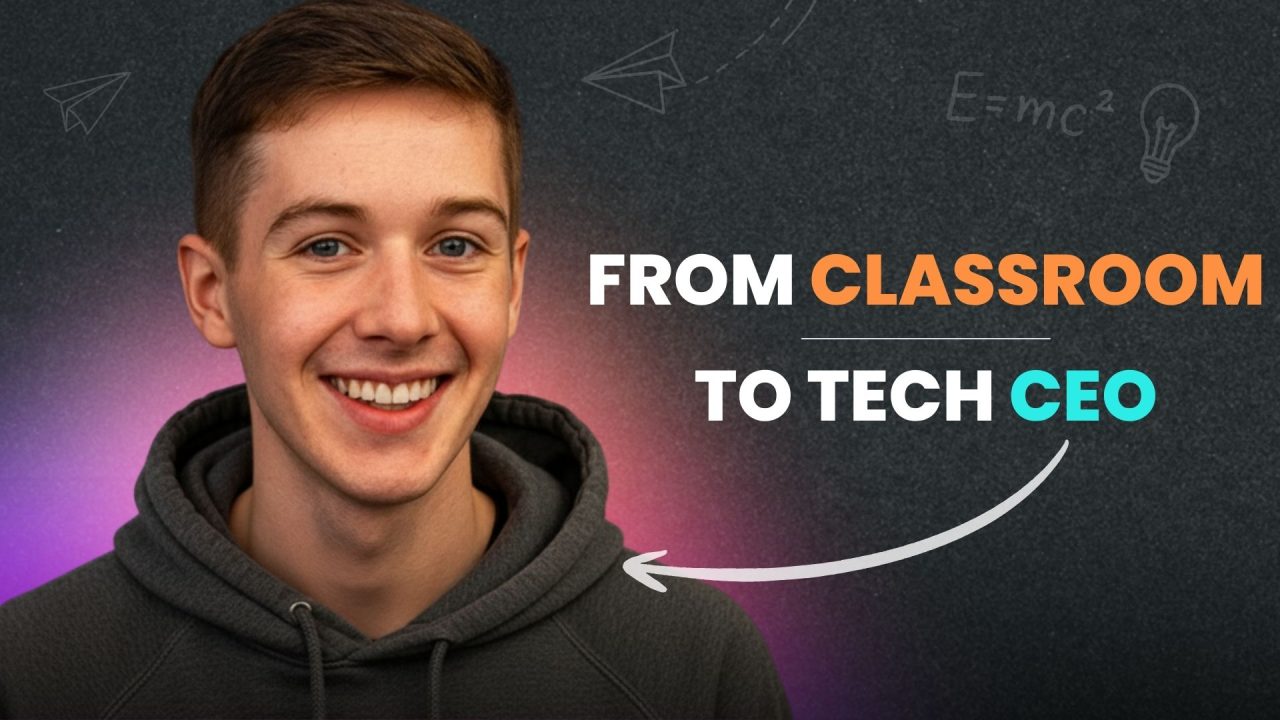TL;DR
- A compelling idea born from a school project can be the foundation of a successful AI startup.
- Leveraging no-code and low-code AI platforms significantly accelerates development and reduces initial costs.
- Strategic market validation, user feedback, and iterative development are crucial for product-market fit.
- Building a strong team and securing early funding are key milestones in scaling from a project to a business.
- The journey from academic endeavor to tech CEO is achievable with resilience, innovation, and a clear vision.
The Genesis: A Spark in the Classroom

Every great journey begins with a single step, or in my case, a single lecture. The idea for my AI app, now a thriving startup, wasn’t born in a Silicon Valley garage but in a university classroom. It was a typical Tuesday, during a Machine Learning seminar, when the professor challenged us: “Think of a real-world problem, and how AI could solve it.”
My mind immediately went to the inefficiencies I observed in local small businesses, particularly in customer service. Many struggled with repetitive queries, leading to frustrated customers and overworked staff. Could AI offer a scalable solution that was also affordable for these businesses? This question became the core of my final year project: an AI-powered chatbot designed to automate customer support for local service providers.
Launch Your App Today
Ready to launch? Skip the tech stress. Describe, Build, Launch in three simple steps.
BuildThe initial concept was simple: a chatbot that could answer frequently asked questions, schedule appointments, and even process basic orders. What started as a graded assignment quickly morphed into an obsession. I wasn’t just building for a grade; I was building for a purpose. This hands-on experience taught me the profound impact AI could have beyond academic theory, setting the stage for an entrepreneurial leap.
The Leap of Faith: From Project to Prototype
After graduation, the project sat on my hard drive, a testament to my academic efforts. But the idea kept nagging at me. Friends and former professors often asked about its potential. “Could this actually be a business?” they’d inquire. The answer, I realized, was a resounding ‘yes’. The market demand for efficient, automated customer service was growing, especially among small to medium-sized businesses that couldn’t afford custom software development.
The first hurdle was translating a proof-of-concept into a viable product. My academic project was functional, but it lacked the polish and scalability required for a commercial application. This is where I discovered the power of no-code AI development. Instead of spending months learning complex programming languages and frameworks, I could leverage existing platforms to rapidly build and iterate.
I chose a no-code platform that allowed me to integrate various AI APIs, focusing on natural language processing (NLP) for improved conversational capabilities. This approach drastically cut down development time and costs. Suddenly, the vision of building an AI chatbot with no-code became a reality faster than I ever imagined. The initial prototype, though still rough around the edges, was enough to start showing to potential users.
Embracing No-Code AI for Rapid Development
Many aspiring tech entrepreneurs, especially those without a deep coding background, face a significant barrier to entry. No-code and low-code platforms are dismantling these barriers. For my AI app, they were a game-changer. I could focus on the user experience and the AI’s intelligence rather than getting bogged down in syntax errors and server configurations. This allowed me to add AI to my app without extensive coding, accelerating the journey from concept to market.
The flexibility of these platforms also meant I could easily test different AI models and integrate them into my app. For instance, experimenting with various large language models (LLMs) to refine the chatbot’s responses was straightforward. This iterative process was crucial for improving the app’s performance and user satisfaction.
Market Validation: Listening to the Users

With a functional prototype, the next critical step was market validation. I started by approaching local businesses in my community – a small coffee shop, a dentist’s office, and a boutique. Their feedback was invaluable. They loved the idea of automating routine tasks, but they also highlighted specific needs: seamless integration with their existing booking systems, personalized responses, and easy setup.
One early adopter, a local bakery owner, mentioned how their phone lines were constantly tied up with questions about daily specials and opening hours. Our AI chatbot, once deployed, freed up their staff to focus on baking and serving customers directly. This direct impact on a small business was incredibly motivating.
This phase also involved deep dives into competitor analysis and understanding the pricing landscape. I learned that while many large enterprises had sophisticated AI solutions, the small business market in the USA was underserved, hungry for affordable, easy-to-implement options. This confirmed my niche and helped refine the app’s feature set.
Iterative Development and User Feedback
User feedback became the compass guiding my development. Each piece of criticism or suggestion was an opportunity to improve. I frequently used the no-code platform’s capabilities to quickly implement changes and roll out new versions. This agile approach allowed me to maintain a close relationship with my early users and ensure the product was evolving to meet their needs.
For example, initially, the chatbot struggled with nuanced customer queries. By refining the prompt engineering for the AI, I significantly enhanced its ability to understand and respond contextually. This continuous improvement cycle was paramount to achieving product-market fit.
Building the Business: From Solo Founder to Team Leader
As the app gained traction, it became clear that I couldn’t do it all alone. The transition from a solo founder to a team leader was one of the most challenging yet rewarding aspects of this journey. I started by bringing on a marketing specialist and a dedicated customer success manager. Their expertise allowed me to focus more on product strategy and fundraising.
Securing initial funding was another major milestone. I leveraged my university network and local startup incubators to connect with angel investors. Presenting a working prototype, a clear market need, and positive early user feedback made a compelling case. We raised a seed round that allowed us to expand our team, invest in better infrastructure, and scale our marketing efforts across the USA.
Building a company culture centered around innovation, customer obsession, and continuous learning was essential. We fostered an environment where everyone felt empowered to contribute ideas and take ownership. This collaborative spirit has been a cornerstone of our success.
Scaling with AI and Automation
As we grew, the need for efficient internal operations became apparent. We implemented AI-powered automation tools not just for our customers but also for our own business processes. From automating email communications to using AI for data analysis, these tools helped us maintain agility and efficiency as we scaled.
We also explored advanced no-code strategies for scaling our AI applications to production. Understanding how to manage API costs and ensure robust performance became critical. Our focus remained on providing a powerful yet accessible AI solution for small businesses, helping them automate their small business operations.
The Road Ahead: Vision for the Future
Today, my AI app serves hundreds of small businesses across the USA, helping them streamline customer interactions, reduce operational costs, and improve customer satisfaction. We’ve expanded our features to include multi-channel support, advanced analytics, and even personalized marketing automation. The journey from a simple school project to a tech CEO has been an incredible learning experience, filled with challenges and triumphs.
Our vision for the future is to democratize AI, making powerful automation tools accessible to every small business, regardless of their technical expertise or budget. We believe that AI shouldn’t be exclusive to large corporations but should empower local entrepreneurs to compete and thrive in an increasingly digital world. We’re constantly researching new AI models and no-code functionalities to keep our product at the forefront of innovation.
The landscape of AI and no-code is evolving rapidly. Staying ahead means continuous learning, adapting to new technologies, and always keeping the user at the center of our development. We’re excited to see how our app will continue to grow and transform businesses across the nation, proving that a classroom idea, fueled by passion and smart execution, can indeed change the world.
Continuous Innovation and Ethical AI
As a leader in the AI space, we are deeply committed to ethical AI practices. This means ensuring our algorithms are fair, transparent, and respectful of user privacy. We regularly review our models for bias and implement safeguards to ensure responsible AI deployment. This commitment not only builds trust with our users but also aligns with our core values.
We also actively explore new applications of AI for various industries. For instance, we’re looking into how our platform could be adapted for AI in education, creating personalized learning assistants, or even for AI in legal research to assist small law firms. The possibilities are endless, and our no-code foundation allows us to pivot and innovate quickly.
Key Takeaways for Aspiring Founders

For anyone with a burning idea, whether it’s from a school project or a late-night brainstorm, here are a few lessons I’ve learned:
- Start Small, Think Big: Don’t underestimate the power of a minimum viable product (MVP). My initial project was far from perfect, but it proved the core concept. Focus on solving one problem exceptionally well, then expand.
- Embrace No-Code/Low-Code: These tools are not just for non-technical founders; they are powerful accelerators for everyone. They enable rapid prototyping, testing, and deployment, saving immense time and resources. Consider how you can build AI apps without code to validate your ideas quickly.
- Listen to Your Users: Your customers are your most valuable asset. Their feedback will guide your product development and help you find product-market fit.
- Build a Strong Network: Connect with mentors, advisors, and other entrepreneurs. Their insights and support are invaluable, especially during challenging times.
- Persistence is Key: The journey from idea to CEO is rarely linear. There will be setbacks and moments of doubt. Resilience and an unwavering belief in your vision will carry you through.
- Focus on Scalability Early: Even if you start small, think about how your app will handle growth. Consider how to scale no-code AI apps to production to avoid bottlenecks later on.
- Strategic Use of AI APIs: Don’t try to build every AI component from scratch. Leverage robust generative AI APIs for no-code developers to integrate advanced functionalities efficiently.
- Don’t Forget the Business Side: A great product isn’t enough. You need a solid business plan, a clear monetization strategy, and an understanding of your target market. Think about how to monetize AI SaaS tools effectively.
- Innovate Constantly: The tech world moves fast. Keep an eye on emerging trends and new AI capabilities. For example, staying updated on tools that build AI apps in minutes can give you a competitive edge.
- Think Globally, Act Locally: While our initial focus was the USA, the principles of AI automation are universal. Always consider broader applications while catering to specific local needs.
My journey from a student with a project to a tech CEO is a testament to the power of combining academic curiosity with entrepreneurial drive and the incredible capabilities of modern no-code AI tools. If I can do it, so can you. The future is ripe for innovation, and the tools to build it are more accessible than ever before.
Frequently Asked Questions
What is the most challenging part of turning a school project into a startup?
The most challenging part is often the transition from an academic proof-of-concept to a market-ready product. This involves rigorous market validation, securing funding, building a team, and scaling operations, which are very different from academic requirements. It requires a shift in mindset from theoretical application to practical, user-centric problem-solving and business development.
How can no-code AI tools help aspiring entrepreneurs?
No-code AI tools significantly lower the barrier to entry for entrepreneurs without a strong technical background. They enable rapid prototyping, allowing ideas to be tested and iterated quickly with minimal investment. This speeds up the time to market, reduces development costs, and allows founders to focus on product vision and business strategy rather than complex coding, making it easier to build AI apps with no-code tools.
What role does market validation play in the success of an AI app startup?
Market validation is crucial because it confirms that there’s a genuine need for your product and that your solution effectively addresses that need. Without it, you risk building something nobody wants or needs. Early and continuous user feedback helps refine the product, identify the target audience, and ultimately achieve product-market fit, which is essential for sustainable growth.
What advice do you have for students considering an entrepreneurial path with their projects?
My advice is to be bold and persistent. Don’t let the scope of your project limit your vision. Start by deeply understanding a problem, then explore how AI can offer a unique solution. Leverage university resources, mentorship, and no-code tools to bring your idea to life quickly. Seek feedback constantly, be ready to pivot, and remember that every successful startup began as an idea, often a simple one, in a classroom or dorm room.
How important is team building in the early stages of an AI startup?
Team building is incredibly important. While a solo founder can kickstart an idea, scaling an AI startup requires diverse skills in areas like technology, marketing, sales, and customer success. A strong, complementary team not only shares the workload but also brings different perspectives, expertise, and networks, which are vital for navigating the complexities of launching and growing a business in the competitive tech landscape.
Launch Your App Today
Ready to launch? Skip the tech stress. Describe, Build, Launch in three simple steps.
Build




